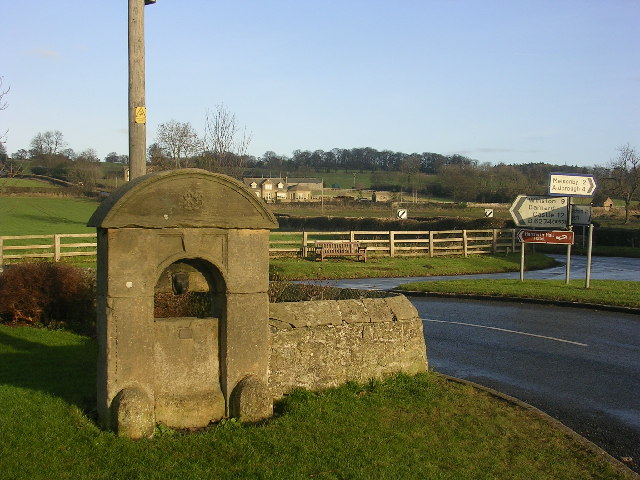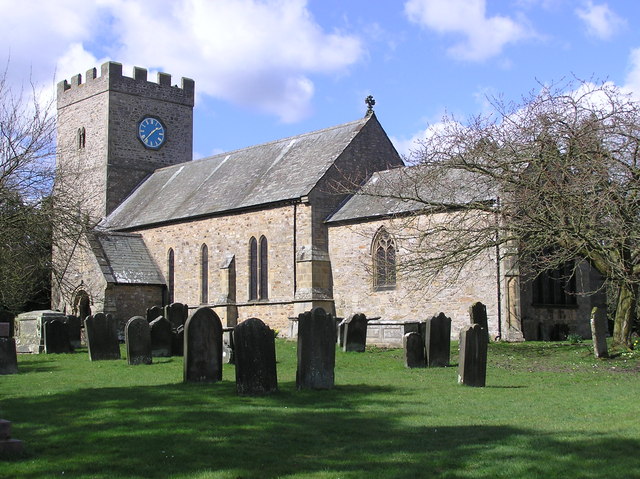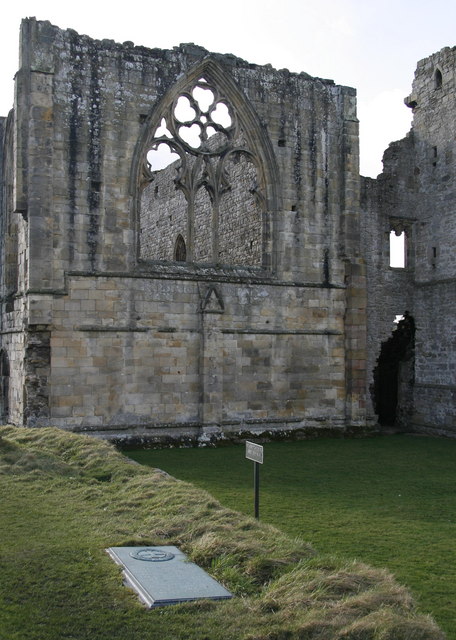|
Grade I Listed Buildings In Richmondshire
There are over 9,000 Grade I listed buildings in England. This page is a list of these buildings in the district of Richmondshire in North Yorkshire. Richmondshire Notes External links {{GradeIListedbuilding Richmondshire Richmondshire {{Infobox settlement , name = Richmondshire District , type = District , image_skyline = , imagesize = , image_caption = , image_blank_emblem= Richmondshire arms.png , blank_emblem_type = Coat ... Richmondshire ... [...More Info...] [...Related Items...] OR: [Wikipedia] [Google] [Baidu] |
Grade I Listed Building
In the United Kingdom, a listed building or listed structure is one that has been placed on one of the four statutory lists maintained by Historic England in England, Historic Environment Scotland in Scotland, in Wales, and the Northern Ireland Environment Agency in Northern Ireland. The term has also been used in the Republic of Ireland, where buildings are protected under the Planning and Development Act 2000. The statutory term in Ireland is " protected structure". A listed building may not be demolished, extended, or altered without special permission from the local planning authority, which typically consults the relevant central government agency, particularly for significant alterations to the more notable listed buildings. In England and Wales, a national amenity society must be notified of any work to a listed building which involves any element of demolition. Exemption from secular listed building control is provided for some buildings in current use for worship, ... [...More Info...] [...Related Items...] OR: [Wikipedia] [Google] [Baidu] |
Constable Burton Hall
Constable Burton Hall is a grade I-listed Georgian mansion of dressed stone in an extensive and well wooded park in the village of Constable Burton in North Yorkshire, and is privately owned by the Wyvill family. The house is a two-storey ashlar faced structure with a five bay frontage having an elegant recessed Ionic portico. The principal entrance is approached by a double flight of steps. The side elevation has a pediment and there is a large projecting bay to the rear of the house. History The estate came into the Wyvill family by marriage in the reign of Edward VI and a house was constructed in Elizabethan times to an H-shaped floor plan. In 1611 Marmaduke Wyvill was created a baronet. The house then passed down to the 7th Baronet, also Sir Marmaduke Wyvill, who in 1768 commissioned John Carr of York to renovate it in the Palladian style. The 7th Baronet was High Sheriff of Yorkshire for 1773 and died unmarried in 1774, causing the baronetcy to become dormant after its ... [...More Info...] [...Related Items...] OR: [Wikipedia] [Google] [Baidu] |
Gilling With Hartforth And Sedbury
Gilling with Hartforth and Sedbury is a civil parish in North Yorkshire, England. It includes the villages of Gilling West and Hartforth. The civil parish population at the 2011 census was 534. Governance Gilling West remains the name of the electoral ward. This ward stretches north west to Ravensworth Ravensworth is a village and civil parish in the Holmedale valley, within the Richmondshire district of North Yorkshire, England. It is approximately north-west of Richmond and from Darlington. The parish has a population of 255, accordin ... with a total population taken at the 2011 census of 1,184. References Civil parishes in North Yorkshire {{Richmondshire-geo-stub ... [...More Info...] [...Related Items...] OR: [Wikipedia] [Google] [Baidu] |
Gilling West
Gilling West is a village about north of Richmond in the Richmondshire district of North Yorkshire, England. It is located in the civil parish of Gilling with Hartforth and Sedbury. It is named "West" to distinguish it from Gilling East in Ryedale, some 32 miles away. A 2018 report states that the community houses people who commute to Darlington, Teesside and Richmond via the A66 and A1(M). The settlement "retains a village hall, two public houses and a shop but there is no longer a post office. There is a limited bus service to the village." The report adds that Gilling West is a Conservation Area with the High Street of particular significance. "A substantial percentage of the buildings n the communityare listed as being of special architectural or historic interest". History Gilling was mentioned in the Domesday Book of 1086 under the name of ''Ghellinges'' "in the hundred of Land of Count Alan" as a tiny village with "16 villagers. 3 freemen. 6 smallholders". The tenant ... [...More Info...] [...Related Items...] OR: [Wikipedia] [Google] [Baidu] |
Forcett
Forcett is a village in the Richmondshire district of North Yorkshire, England. It lies near the border with County Durham, on the B6274 road about 8 miles south of Staindrop. Nearby villages include Eppleby, Caldwell and Aldbrough. History The origin of the place-name is from the Old English words ''ford'' and ''set'' meaning fold by a ford and appears as ''Forset'' in the Domesday Book of 1086. In 1367, the manor was granted to Sir Walter Urswyk by John of Gaunt, Duke of Lancaster, Earl of Richmond, for Urswyk's valour at the Battle of Navarretta during the Hundred Years' War. Urswyk was later High Constable of Richmond Castle and Master Forester of the Forest of Bowland. Buildings St Cuthbert's Church is located in the centre of the village. On the edge of the village is Forcett Park in which stands Forcett Hall, a Palladian Palladian architecture is a European architectural style derived from the work of the Venetian architect Andrea Palladio (1508–1580). ... [...More Info...] [...Related Items...] OR: [Wikipedia] [Google] [Baidu] |
Forcett Hall
Forcett Hall is an English country house in the village of Forcett, North Yorkshire, England, some west of Darlington. It is a Grade I listed building. History Forcett had been in the possession of the Shuttleworth family of Gawthorpe Hall, Lancashire since 1582. Forcett Hall was originally an Elizabethan house, modified in 1710 by William Benson (architect), William Benson. After a fire in 1726 it was substantially redesigned in 1740 in the Palladian style by architect Daniel Garrett under Richard Shuttleworth, MP, vacating the family seat at Gawthorpe to move in. It passed to his son James Shuttleworth (politician), James, MP for Preston (UK Parliament constituency), Preston and Lancashire (UK Parliament constituency), Lancashire and High Sheriff of Yorkshire for 1760–61. James' son Robert inherited the property on his father's death in 1773 but sold it in 1784. His son Robert moved back to live at Gawthorpe. Robert, let Forcett Hall to Algernon Percy, 1st Earl of Bever ... [...More Info...] [...Related Items...] OR: [Wikipedia] [Google] [Baidu] |
East Witton
East Witton is a village and civil parish in Wensleydale in North Yorkshire, England. It lies south of Leyburn, in the Richmondshire district. Richard Whiteley is buried there; he and his partner, Kathryn Apanowicz, lived in the village. The village lies at the mouth of Coverdale. The River Cover and the River Ure are on the northern boundary of the parish. The parish also includes Jervaulx Abbey, east of the village, and Braithwaite Hall, a 17th-century manor house owned by the National Trust, west of the village. The western part of the parish is in the Yorkshire Dales National Park. Most of the eastern part is in the Nidderdale Area of Outstanding Natural Beauty. History East Witton was originally known simply as Witton, and was mentioned (as ''Witun'') in the Doomsday Book. The name is Old English, from ''widu'' and ''tūn'', meaning "wood settlement", suggesting a place where wood was felled or worked. By the late 12th century the village became known as East ... [...More Info...] [...Related Items...] OR: [Wikipedia] [Google] [Baidu] |
Jervaulx Abbey
Jervaulx Abbey in East Witton, 14 miles north-west of the city of Ripon, was one of the great Cistercian abbeys of Yorkshire, England, dedicated to St Mary in 1156. It is a Grade I listed building. The place name ''Jervaulx'' is first attested in 1145, where it appears as ''Jorvalle''. The name is French for 'the Ure valley' and is perhaps a translation of the English 'Ure-dale', also known as Yoredale. The valley is now called Wensleydale. History Initially a Savigniac foundation out of Normandy, the abbey was later taken over by the Cistercian order from Burgundy and responsibility for it was taken by Byland Abbey. Founded in 1145 at Fors near Aysgarth, it was moved ten years later to a site a few miles away on the banks of the River Ure. In 1145, in the reign of King Stephen, Akarius Fitz Bardolph, who was Lord of Ravensworth, gave Peter de Quinciano, a monk from Savigny, land at Fors and Worton, in Wensleydale, to build a monastery of their order. The monastery there w ... [...More Info...] [...Related Items...] OR: [Wikipedia] [Google] [Baidu] |
Easby, Richmondshire
Easby is a hamlet and civil parish in the Richmondshire district of North Yorkshire, England. It is situated near Richmond on the banks of the River Swale, approximately north west from the county town of Northallerton. The population taken by ONS was less than 100. Population information is included in the parish of Hudswell. History The hamlet is mentioned in the Domesday Book of 1086 as '' Asebi'', whose lands belonged to Count Alan of Brittany. He had granted the lordship of the manor to ''Thor'' at the time of the Norman Conquest, but it had passed to ''Enisant Mussard'', Constable of Richmond Castle, by 1086. There were seven households and five ploughlands at a taxable value of six geld units. The manor passed from Enisant to Roald de Richmond and then to descent of the lords of Constable Burton. The lands were held as demesne lordships by the Marmion and Fitz Hugh families into the 12th century, but eventually they were granted to the nearby Abbey who held them unti ... [...More Info...] [...Related Items...] OR: [Wikipedia] [Google] [Baidu] |
Easby Abbey
Easby Abbey, or the Abbey of St Agatha, is a ruined Premonstratensian abbey on the eastern bank of the River Swale on the outskirts of Richmond in the Richmondshire district of North Yorkshire, England. The site is privately owned but maintained by English Heritage and can be reached by a riverside walk from Richmond Castle. Within the precinct is the still-active parish church, displaying 13th-century wall paintings. History The Abbey of St Agatha, Easby, was founded in 1152 by Roald, Constable of Richmond Castle. The inhabitants were canons rather than monks. The Premonstratensians wore a white habit and became known as the White Canons. Easby was a daughter house of the Abbey of St Mary and St Martial (Newsham Abbey) in Lincolnshire; it was the third Premonstratensian house funded in England. The White Canons followed a code of austerity similar to that of Cistercian monks. Unlike monks of other orders, they were exempt from episcopal discipline. They undertook preaching and ... [...More Info...] [...Related Items...] OR: [Wikipedia] [Google] [Baidu] |
Croft-on-Tees
Croft-on-Tees is a village and civil parish in the Richmondshire district of North Yorkshire, England. It has also been known as Croft Spa, and from which the former Croft Spa railway station took its name. It lies north-north west of the county town of Northallerton. History The village is mentioned in the ''Domesday Book'' as ''Crofst''. It makes no mention of any lord of the manor prior to the Norman conquest, but names ''Enisant Musard'' as lord after 1086, granted to him by Count Alan of Brittany. The lands were subject to many years of dispute until the 13th century. In 1205, King John settled the issue by granting the lands to Roald the Constable of Richmond. His heirs inherited the title until 1299 when they were succeeded by Henry le Scrope of Bolton. Thereafter the lands were held under the Scropes by the Clervaux family. They held the manor until 1590 when the direct male line ceased, but Clervuax inheritance continued via marriage to the Chaytor family into the 20 ... [...More Info...] [...Related Items...] OR: [Wikipedia] [Google] [Baidu] |
Church Of St Peter, Croft-on-Tees
The Church of St Peter, Croft-on-Tees is a 12th century grade I listed parish church in the village of Croft-on-Tees in North Yorkshire, England. Artefacts and carvings inside the church are believed to have given rise to many of the characters created by Lewis Carroll, who as a child, attended St Peter's in the 1840s when his father was rector of the church. The church also features in Simon Jenkins' book ''"England's Thousand Best Churches"''. History The church was first started in the 12th century and was added to in the 13th, 14th and 15th centuries with major renovations in the late 19th century. The bulk of the church is in the Decorated style with a later addition tower on the west side which is constructed of different stone to the rest of the church; the exteriors walls of the church are constructed from red sandstone which is found in the Tees Valley, though it has been re-inforced with brown sandstone. The nave and chancel together, measure from west to east. Whilst ... [...More Info...] [...Related Items...] OR: [Wikipedia] [Google] [Baidu] |



.jpg)



